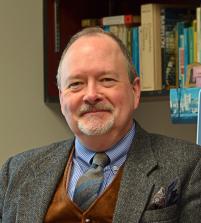Census Canada — John G. Stackhouse, Jr.
Observers of religion and Canadian public life rejoice that the Canadian census, taken every ten years, asks questions about religious affiliation
Observers of religion and Canadian public life rejoice that the Canadian census, taken every ten years, asks questions about religious affiliation. Statistics Canada has now released its report on the religious components of the 2001 census, and things are not entirely what they seem.
Canada appears still to be an overwhelmingly Christian nation. More than three-quarters (76 percent) of the population continue to call themselves Christian. This has shrunk over the previous decade from four-fifths (83 percent) -- largely due to continued decline in Canada's three mainline Protestant denominations (United, Anglican, and Presbyterian) -- but it still makes Christianity by far the dominant religious orientation. "No religion" is the second-most-reported "affiliation," up from 13 percent in 1991 to 16 percent, which leaves only 8 percent for everybody else.
So while some other major religions have increased impressively (Buddhism, Hinduism, and Sikhism almost doubled and Islam increased by 125 percent) their growth is almost entirely due to immigration and the total proportion, including Jews, is only about 6 percent. (And even the majority of recent immigrants, almost half, espouse Christianity.) In 1871 fully 3 percent of Canadians identified with "other-than-Christianity," so the purported explosion of world religions in Canada is not as impressive as it might appear. The official Canadian policy of multiculturalism still manifests a largely Christian or quasi-Christian accommodation of relatively small religious minorities. And many in those minorities are just beginning to cope with the challenge of assimilation in a country that, unlike their places of origin, does not support their traditional faith.
The "no-religion" sector deserves another look or two. For one thing, sociologist Reginald Bibby of the University of Lethbridge -- Canada's leading authority on such matters -- has emphasized that one-quarter of these "religious nones" are under the age of 15. Mom or Dad is telling the census takers that, so far at least, little Jason or Marie hasn't declared any particular religion. Bibby goes on to show that more than half of these "religious nones" will in fact affiliate with a religion, and almost always a form of Christianity, before they reach 40.
It also bears remembering that "no religion" does not mean "no spiritual interest." Statistics Canada has yet to offer the option of "do-it-yourself spirituality" on the census. Thus many Canadians who construct their own forms of religious life opt for "no religion" to indicate "no 'proper noun' religion -- but I'm still spiritual."
And yet, a number of such people still opt to call themselves "Christian." Bibby's research has shown that a significant minority of self-identified Christians in Canada believe in reincarnation, among other heterodox beliefs. So one might well wonder about how Christian, in any normative sense, this three-quarters of the national population actually is.
The census records only self-identification, but the General Social Survey also asks about attendance at religious services -- a measure of what people actually do (or, at least, say they do). Nationally, only one-fifth (20 percent) of Canadians age 15 and over attended religious services on a weekly basis in 2001, compared with 28 percent in 1986. In 2001, four in 10 adults (43 percent) reported that they had not attended religious services during the 12 months prior to the survey, compared with only 26 percent in 1986. So, while Canada remains nominally Christian, only a minority follow the traditional practice of attending church regularly.
The most surprising figures, however, are buried below the fold line, so to speak. The Baptists continue to maintain their proportion of the population by growing about 10 percent -- as the country itself did. At the same time, the Pentecostals have actually declined by 15 percent. In a global framework of exploding pentecostal/charismatic Christianity, a decline of Pentecostalism is like "a decline of Starbucks." It may be that as the Pentecostal Assemblies of Canada has "cooled off" and become more generically "evangelical," it is no longer as attractive to "hotter" Christians who then migrate to the Vineyard or to nondenominational pentecostal/charismatic churches.
In sum, Canada continues to resemble European patterns more and more: majority, but nominal, allegiance to once-influential Christian churches now relegated to the sidelines of cultural life; a rising cadre of "no [particular] religion"; a vital evangelical minority -- maybe 8 percent of the total (versus American figures of close to 40 percent); and a small but growing group of world religions mostly transplanted from overseas.
Thus, the effects of both the Quiet Revolution that secularized Quebec in the 1960s and what I like to call the "Even Quieter Revolution" in Anglo-Canada in the subsequent decades continue apace.
The report from Statistics Canada can be viewed here.
Author, John G. Stackhouse, Jr., is the Sangwoo Youtong Chee Professor of Theology and Culture at Regent College, Vancouver, Canada.


